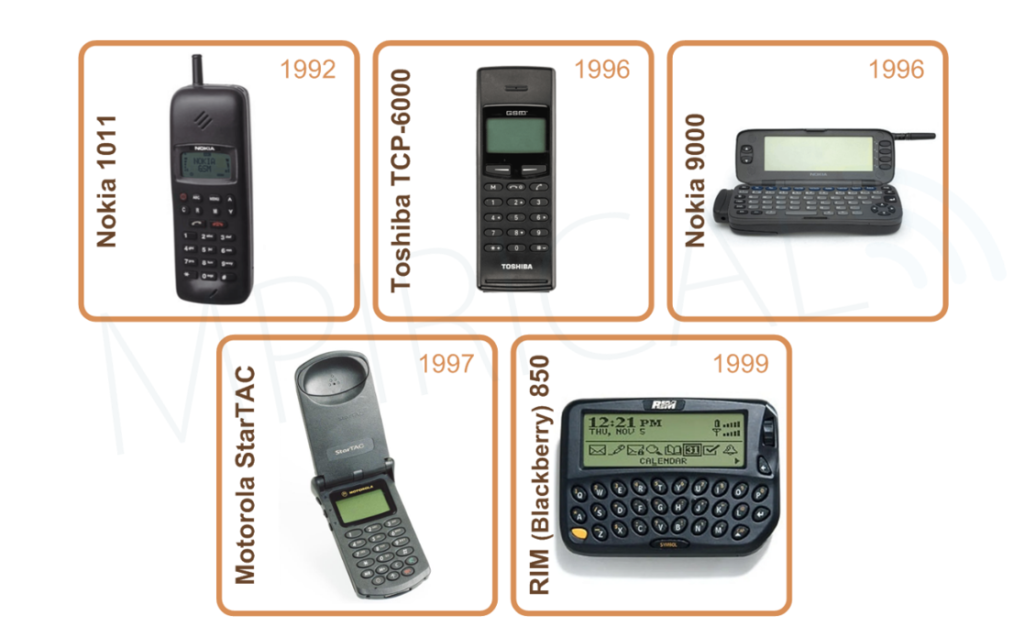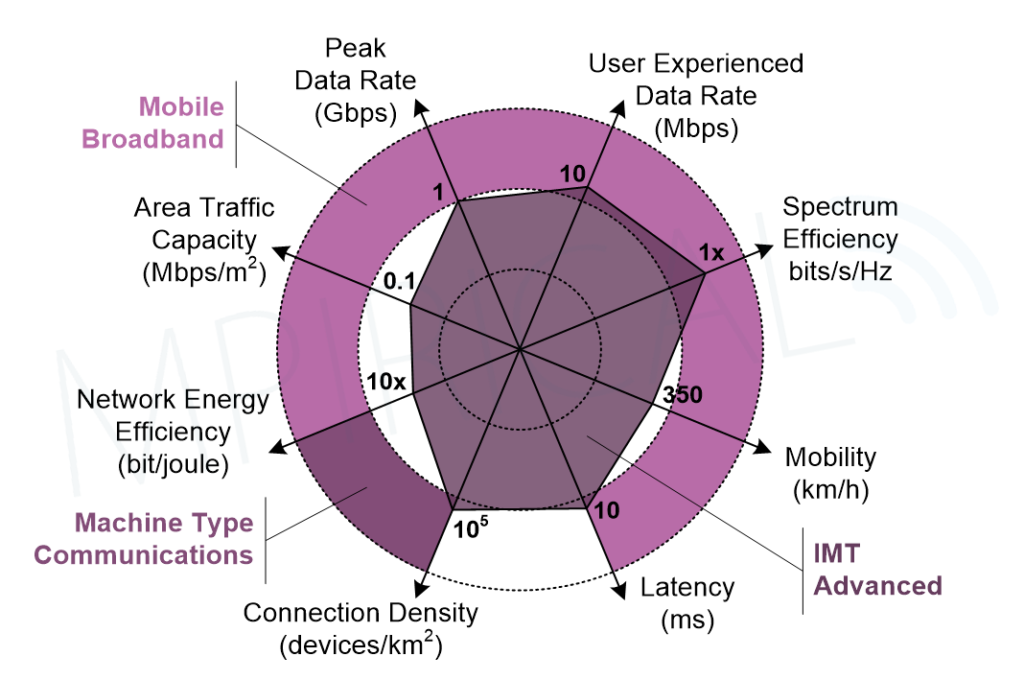
A Timeline from 1G to 5G: The Evolution of Mobile Communication
In the past few decades, mobile communication has witnessed remarkable advancements, transforming the way we connect, communicate, and access information. From the early days of brick-sized mobile phones with limited capabilities to today’s sleek smartphones with lightning-fast data speeds, the journey of mobile networks has been nothing short of astonishing. In this blog post, we’ll take a trip down memory lane and explore the evolution of mobile communication from 1G to 5G, understanding how each generation of mobile networks has shaped the world we live in.

1G: The Birth of Mobile Communication
The foundations for today’s modern mobile networks were laid as early as the 1940s with early car phone services, but it would take some time for the technology itself to develop for personal use. We can consider the 1980s as the first real milestone in the development of the mobile networks in use today.
These early mobile networks that we would now refer to as 1G, used analogue technology and examples included AMPS (Advanced Mobile Phone System) in the United States and the NMT (Nordic Mobile Telephone) System in Europe.
1G was primarily designed for voice calls and the technology itself was much simpler when compared with later generations. 1G networks had several limitations, the analogue technology provided limited capacity and relatively poor call quality. Perhaps the biggest limitation of these early networks was the complete lack of security, meaning calls were susceptible to eavesdropping and interference.
2G: The Advent of Digital Communication
The 1990s witnessed the emergence of 2G mobile networks, which marked a significant leap forward from the limitations of their 1G predecessors. 2G networks adopted digital transmission methods, bringing about a host of improvements that revolutionised the mobile telecommunications industry. The use of digital signals made 2G networks much more efficient allowing for a greater number of concurrent calls and users on the network. This improved capacity as well as developments in reducing the physical size and cost of mobile phones were crucial in the explosion of demand for mobile services.

Another defining feature was the introduction of SMS (Short Message Service), allowing users to send text messages for the first time. Although this feature was available from the earliest iteration of the GSM network it wouldn’t become popular until later in the 1990s and 2000s – where usage surged as it became an increasingly popular and cost-effective method of communication between users.
There were several competing (and incompatible) technologies in use in 2G networks from GSM which was initially deployed in Europe but became popular worldwide, to D-AMPS (a digital evolution of the earlier AMPS technology) and cdmaOne (Code Division Multiple Access) in the USA, through to PDC (Personal Digital Cellular) in Japan.
3G: The Era of Mobile Internet
As we stepped into the new millennium, 3G networks were introduced, ushering in the era of mobile internet. The third generation of mobile communication brought faster data speeds, enabling users to browse the web, send emails, and access basic multimedia content on their phones. This breakthrough laid the foundation for various mobile applications and services, transforming mobile devices into powerful tools for information and entertainment.

One of the defining characteristics of 3G was the significant increase in data and the new opportunities that this facilitated. In the early days of 3G, video calling between mobile devices became available and was expected to be a significant driver in terms of uptake of 3G devices. This early video calling technology utilised circuit switching and was billed by the minute making it an expensive option. It also had the problem that many of these early 3G mobile devices were equipped with basic cameras and video quality was often poor.
The latter half of the 2000s heralded the introduction of both smartphones and app stored which allowed users to download applications to extend the functionality of their handsets.
4G: The Rise of Mobile Broadband
Around 2010, 4G networks emerged, and they marked a substantial leap forward in mobile communication. 4G significantly increased data speeds and reduced latency, making real-time video streaming, online gaming, and high-quality video calls a reality. The improved data speeds and low latency of 4G networks had a profound impact on the mobile application ecosystem. The app-driven culture exploded, with a surge in mobile apps and services catering to various needs and interests. Mobile app stores, such as Apple’s App Store and Google’s Play Store, flourished, offering users access to a vast array of applications for productivity, entertainment, social networking, and much more.

The improved capabilities of 4G networks also spurred the development of Internet of Things (IoT) devices and applications. The lower latency and higher bandwidth allowed for real-time data exchange between connected devices, creating new opportunities for smart homes, wearables, and other IoT innovations.
5G: More Than Just Faster Internet
5G is the next step in the evolution of mobile communications. It was designed to provide greater rates of data transfer, lower latency, and improved reliability compared to previous generations, enabling new use cases, and transforming a wide range of industries.
5G networks can support a much larger number of devices than previous generations and can also handle more data-intensive applications such as Virtual and Augmented Reality, autonomous vehicles, and the IoT (Internet of Things). With 5G, we have seen new innovations and opportunities in a variety of market verticals such as healthcare, manufacturing, transportation, and entertainment. 5G is also a key driver for technologies such as Edge Computing and Artificial Intelligence. 5G is continuing to grow and develop as MSPs (Mobile Service Providers) throughout the world are rolling out their 5G networks, and it will be exciting to see the new use cases it enables as we move through the 2020s. There are a number of key technologies and features unique to 5G and they are outlined in the figure below:

Massive IoT Connectivity: The Internet of Things (IoT) is set to flourish with 5G. The new generation’s ability to connect a massive number of devices simultaneously will lead to smart cities, smart homes, and an interconnected ecosystem that will change how we interact with our surroundings. From smart appliances to autonomous vehicles, 5G will be the backbone of a fully connected world.
Mission-Critical Applications: 5G’s ultra-reliable, low-latency communication (URLLC) opens up possibilities for mission-critical applications, such as remote surgery, autonomous driving, and industrial automation. These applications demand real-time responsiveness and utmost reliability, and 5G provides the robustness required to support them.
Enhanced Mobile Experiences: With augmented reality (AR) and virtual reality (VR) becoming more prevalent, 5G will drive immersive experiences to new heights. The combination of high-speed data and low latency will enable seamless AR/VR applications, transforming entertainment, education, and various industries.
Energy Efficiency and Sustainability: Despite its impressive capabilities, 5G is designed to be more energy-efficient compared to its predecessors. This energy optimization is essential for the future, as it aligns with the growing focus on sustainability and reducing the environmental impact of technology.
The journey from 1G to 5G has been a thrilling one, transforming mobile communication from basic voice calls to a powerful ecosystem of connectivity and innovation. Each generation brought unique features and capabilities that shaped how we interact with mobile technology. While 5G indeed offers faster internet speeds, it represents so much more, promising a future where technology enhances our lives in ways we could only dream of before. As 5G continues to expand its reach, we can anticipate a more interconnected, immersive, and efficient world that will unlock tremendous possibilities.
5G Telecoms Training with Mpirical
Are you looking for 5G training? Mpirical has a huge library of mobile telecom training courses including 40+ 5G specific courses. Our 5G and Essential Technologies package gives you exclusive access to our entire library of OnlineAnytime courses and all supporting courseware, so you can choose what you want to study and learn at a pace that suits you.
